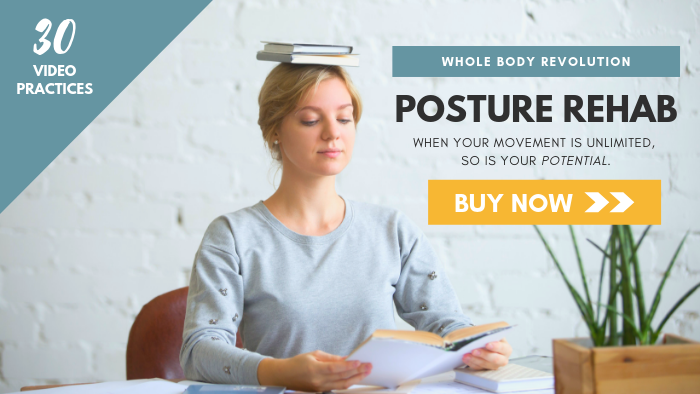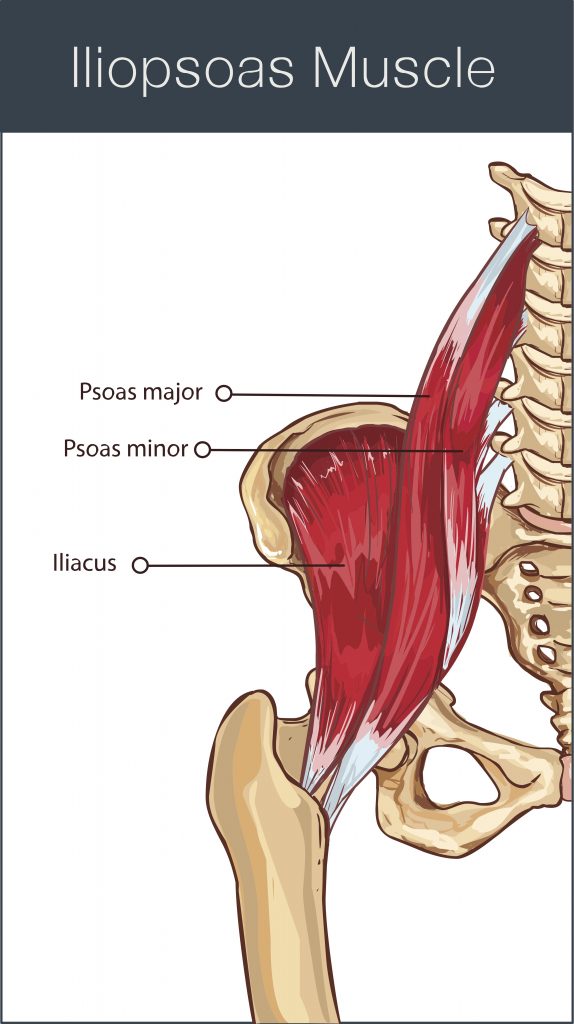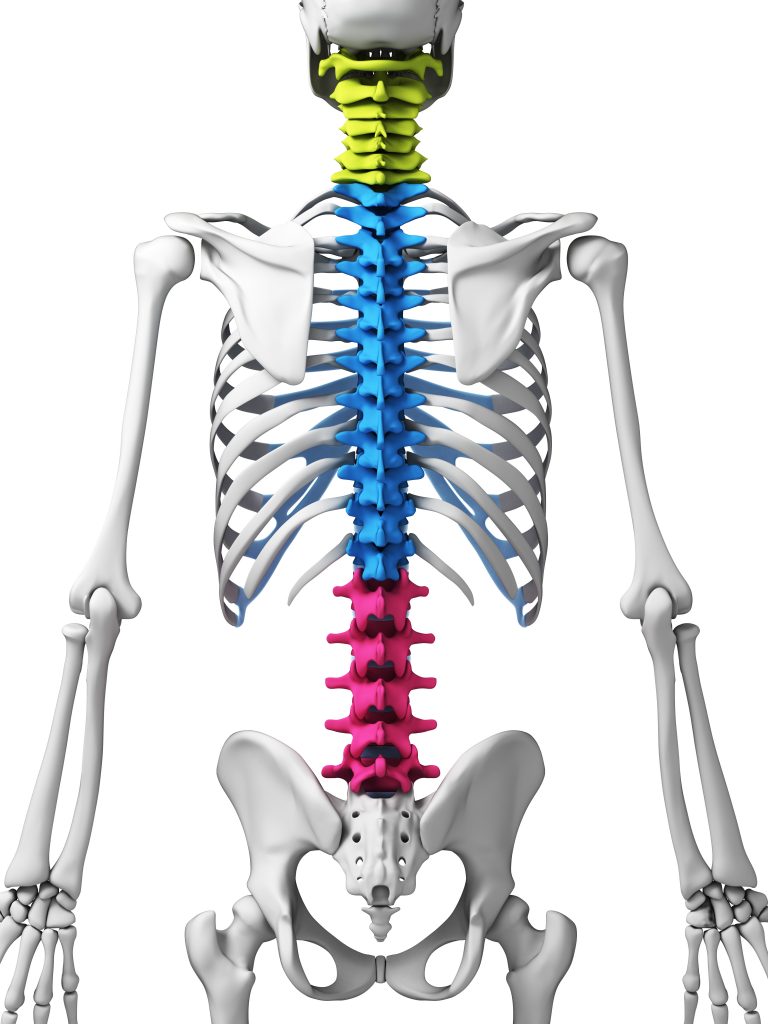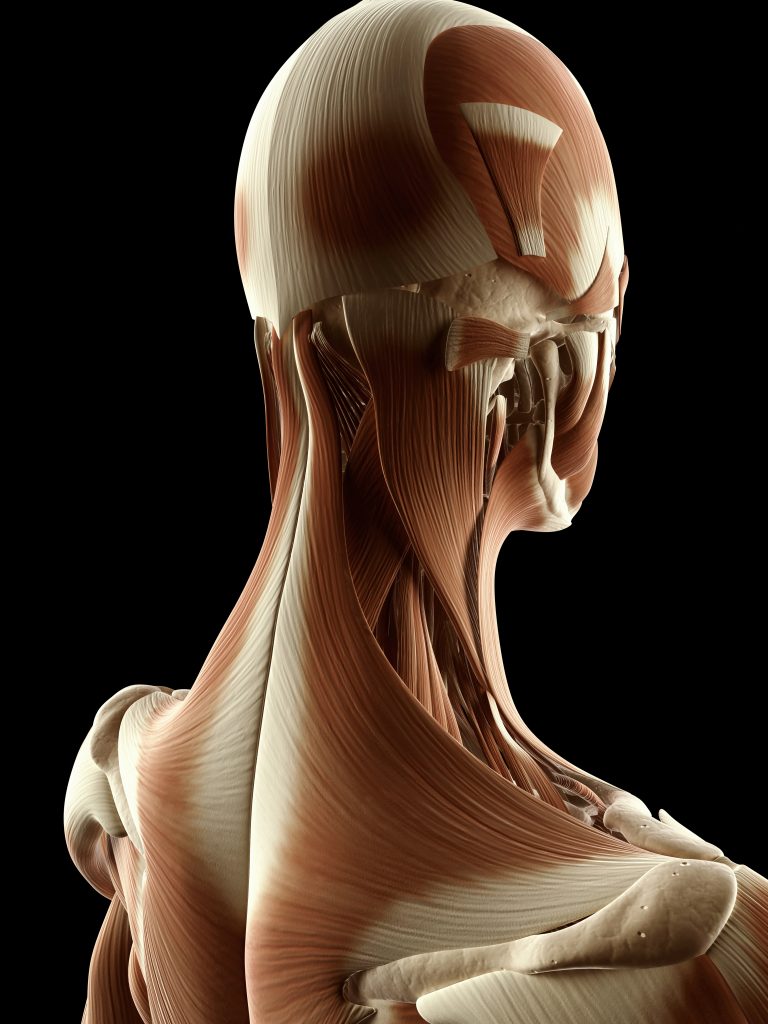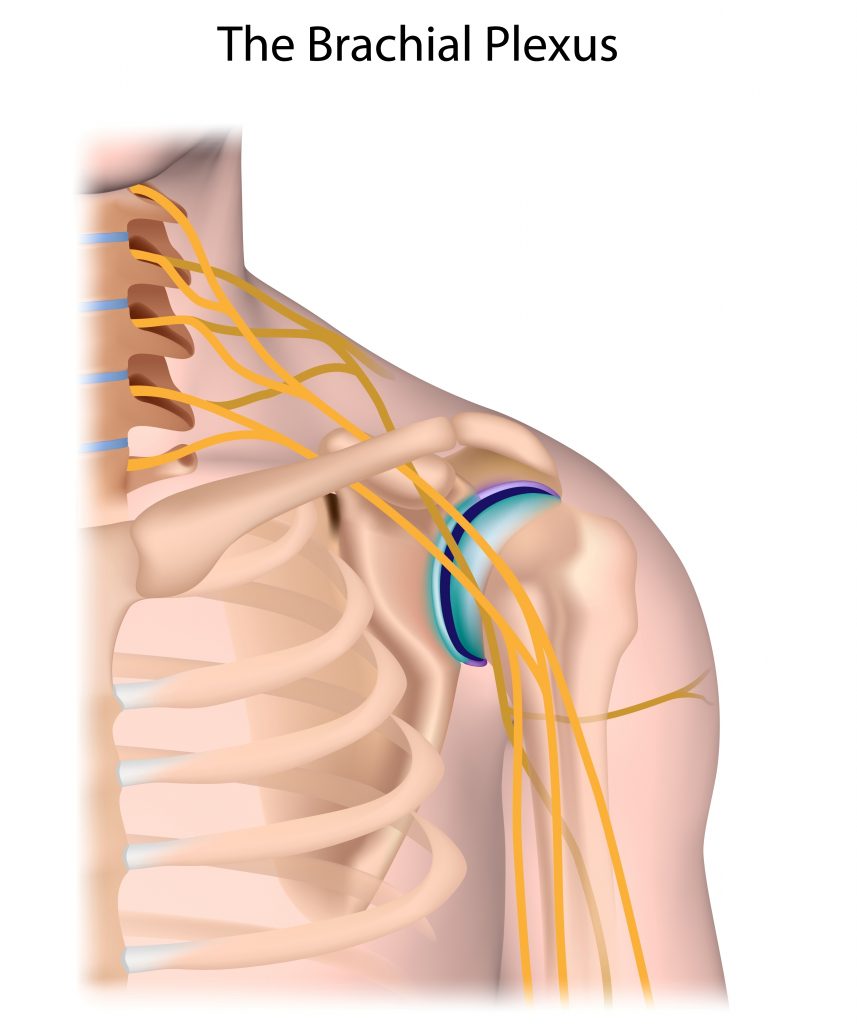You may have heard that the body hangs onto emotions long after events have passed. Traumas from childhood — even seemingly minor things like a friend’s snide comment or your mother snapping at you one morning over breakfast — take root in your muscles and affect your thoughts well into adulthood.
But how does this cellular memory work?
The fact is, embodied memory isn’t some airy-fairy, woo-woo, magical phenomenon. It has real basis in your neurology. This makes a lot more sense when you reassess your view of the mind-body connection and realize that, in fact, your brain is embodied.
The Embodied Brain
Those three pounds of gray matter lodged between your ears don’t just stop at the base of your skull. Your neurons condense down into a thick rope that runs through the core of your vertebra. We call this the spinal cord, but it’s really just an extension of your brain.
And then that spinal cord branches out into thousands, maybe even millions, of tiny nerve fibers that innervate muscles, organs, joints, and bones. Your brain lives in your body exactly as much as it lives inside your head.
And here’s the really interesting thing: your body is sending data to your brain almost more often than your brain checks in with your body. The heart, for example, contains sensory nerve bundles that send information to the brain about nine times more frequently than the brain sends signals to the heart.
The Basis for Trauma
I’ll be honest, I don’t love the word “trauma.” Why? Because it’s really loaded. We have all kinds of conditions around what we consider to be a “traumatic experience.”
In reality, trauma is subjective. As psychologist Peter Levine says: trauma is in the nervous system, not the event.
Meaning: the event is actually irrelevant, and what actually matters is how the person processes the event. If a person has sufficient resources at the time of an accident, injury or emotionally charged event, their nervous system will undergo a normal activation followed by a discharge and then move on without negative impact.
Dr. Levine has observed this process in wild animals. A tiger chases a gazelle, and the prey manages to escape. After the tiger gives up and goes off to stalk his food elsewhere, the gazelle shakes her whole body, discharging the stored fear in her nervous system. Moments later, she’s calmly grazing with the rest of her herd.
As humans, however, we don’t always have sufficient time, space, or resources to process our traumatic experiences, and that’s when scars form in our bodies.
The Story Is Irrelevant
I know that can be really triggering for some people. Unfortunately, a lot of therapy focuses on the story so heavily that many people begin to identify with their past in a deep way.
They label themselves: I am traumatized. I had this horrible experience. Because I had this experience, I am damaged. And then that becomes part of their personal identity.
I’m not denigrating the negative experiences that people have. There are some terrible, heart-wrenching things that happen in the world. What I’m saying here is not that you should just buck up and be stoic but rather that we have to expand our treatment of trauma to include the body for whole-person healing.
Here are three steps to cellular healing that will clear painful emotions from your body.
1. Choose a memory.
The first step to embodied healing of your past is to select a memory that you would like to work with. I recommend starting with something small at first. You can make a brief list of emotionally charged memories and then categorize them as green, yellow and red.
Green memories are things you may have found irritating or annoying, but they don’t cause you alarm or panic. Yellow memories are a bit more charged. Red memories are those that you feel profoundly scarred you and affect your thoughts, beliefs, and current relationships in a very deep way.
Trust me, you don’t want to go for the gold on this one until you have your sea legs. Just start with a little memory until you get a feel for the process. In somatic healing, less is more.
I’m going to say that again for the overachievers in the room: less. is. more.
2. Feel it in your body.
Once you’ve selected a memory, mentally put yourself back into that situation. Maybe it was a friend saying something hurtful, or an offhand remark from a relative that cut you a bit too deeply. Or maybe it was a time when you fell off of your bike and scraped your knee.
Whatever the story, start to think of what happened before the event took place, and like a movie, play back the event in your mind’s cinema.
As you do this, shift your attention to your physical body. What do you notice happening? What parts of your body stiffen, tighten or respond as you recall this event?
List the sensations you feel without analyzing or judging them. Just describe them. Sensation is your body’s language, and the mind has a tendency to want to interject all kinds of interpretations on top of your body’s communication, so try to curb that.
Ask yourself, where do I feel this? How big is this sensation? Is it heavy or light? Does it have a color associated with it? Does it feel dull, sharp, jagged, ropey, thick or something else?
Once you have a clear sense of your body’s response to the memory, move on to step three.
3. Clear the memory.
This is where the magic happens. Now we’re going to clear the memory from your body. Because the mind loves to jump in and control things, we’re going to give it a mantra to keep it busy while the body does its healing work.
Gently put your attention on the sensation you identified in step two. Stay with that while you say, either in your head or out loud: I forgive you. Thank you. I’m sorry. I love you.
(h/t to Denise Duffield Thomas for this forgiveness mantra.)
With your awareness, track the sensation in your body. How is it changing and shifting? Note: it might get worse before it gets better. That’s okay.
If you need a break, just shift your attention to the feeling of your feet on the floor. Open your eyes and take in your surroundings. Once you feel calm and centered again, you can return to the practice.
Remember, less is more. Don’t gut it out — seriously. You don’t have to suffer in order to heal.
While repeating the mantra and focusing your attention on your body, I find it very helpful to alternate gentle tapping on the top of my head and on my sternum. While tapping is widely used in ancient healing practices, I learned this one from Bodytalk.
Theoretically, tapping the head stimulates the brain to build new connections, and tapping on the heart “saves” this information in your body. Does it really work?
As Denise Duffield Thomas says (total side note, her book is awesome, highly recommend), who cares! All of it helps a little bit.
Anyway, continue focusing, tapping and mantra-ing until you feel the sensation in your body shift, dissipate and dissolve. If you’ve selected a green-light memory, this may go very quickly. Or, you may discover that what you thought was a green-light memory is actually covering a snake pit of red memories.
No worries. The tension in your body doesn’t have to dissolve completely. If it does, fantastic, but even a tiny shift toward relaxation is progress.
When you feel the tension dissipate, you can stop tapping and mantra-ing. Open your eyes and notice how you feel overall.
Bonus Points
Now is a good time to create a more constructive mantra to take the place of this old story you’ve just cleared. Choose something positive, avoiding words like “don’t,” “won’t,” and “can’t.”
While syntax does play a role in your brain’s ability to process negative words, positive statements take less energy to interpret.
If you’re stuck, here are a few good basics:
I am safe.
Every cell in my body is completely healthy.
I am a kind and loving person.
I am doing my best, and that is good enough.
For extra credit with this mantra, revisit step two above. As you repeat these words over and over to yourself, what do you notice happening in your body? Do your muscles relax, your jaw stop clenching? How does your breath respond?
Spend time reveling in these positive sensations. This is more than just a mind exercise. Pleasurable physical sensations signal to your brain that you’re safe and that you can relax. They activate your parasympathetic nervous system, which is responsible for rest and digestion.
Living in parasympathetic rather than in chronic sympathetic — fight or flight — lockdown also boosts creativity, deepens interpersonal relationships and empathy, improves gut function, slows heart rate, decreases blood pressure and generally improves your mental and physical well-being.
Parasympathetic is where you want to live on a daily basis for optimal focus, energy, and happiness.
To Go Deeper, Get Support
Whew. That was a lot.
If you want to go deeper with this practice, I recommend adding intentional movement into the mix. Here’s the thing: when trauma takes up residency in your body, usually that can be seen as frozen places that don’t move well.
Over time, the muscles in this area become tense, stiff, dehydrated (like beef jerky — really, it’s kind of icky) and ultimately painful. Then, most people get this random advice to stretch more. That’s great. We should all move and stretch a lot daily.
The problem is, you’ve got this giant frozen area of your body that your nervous system can’t access. It’s like a piece of you went missing.
(And yes, this has distinct parallels to soul death or soul loss as viewed from traditional shamanic healing practices.)
You can go to the gym and do yoga and even get contortion-level bendy but still not move through and release these frozen areas of your body.
I work with yogis, weight lifters, crossfitters, circus arts performers and even contortionists all. the. time.
They still have these frozen areas in their bodies. They all benefit from this intentional defrosting of their muscles.
The truth is that exercising simply isn’t enough. To really, truly, fully release frozen areas of your body, you have to kind of sneak up on them in a non-threatening way. Seriously. I know that sounds weird, but think of it this way:
The trauma in your nervous system is a scared cat. You’ve seen one of these before — eyes wide, jerky movements, tense all over, crouching and cowering, ready to run for safety if you should even so much as breathe wrong.
You’re going to walk up to that scared cat and pick it up. (Substitute dog, bunny, horse, or whatever other animal you love if you’re not a cat person.)
(Maybe not horse. Those are too big to pick up.)
Do you run up to the animal with big movement yelling loudly how much you love it? Probably not. It’s going to run away.
Instead, you approach quietly, softly, speaking in low tones. You may avert your eyes. You certainly don’t broadcast “I’m going to pick you up” body language. You’re in stealth mode.
Well, your nervous system needs the same quiet, cautious, reassuring treatment in order to feel safe enough to release deeply held scars. Anything less will only perpetuate the tension and the problem.
So, what do we do about all of this? This is precisely why I created the videos in my Posture Rehab course. On the surface, it’s about standing up straighter. But these practices communicate deeply to your nervous system, gently dissolving all those old patterns that you’ve been holding onto for years — maybe even decades.
Why videos? Let me be frank: the hands-on work that I do in my practice is life changing. But, not everyone can come to see me. And, in all honesty, this process is not a one and done kind of deal.
You don’t lift weights once and suddenly you’re strong. One yoga class does not a yogi make. Well, one bodywork session doesn’t dissolve your entire life history, either.
Practice makes perfect. You can take this process as deep as you would like. There is always a new level of healing available if you would like to grow there, but fortunately the basics work at every level.
And that’s why the videos. Because you need access to these not for a week or a month or a year, but for a lifetime. Because this process is life changing, if you let it be.
Right now, I’m offering access to 31 body-healing practices personally led by me for $295, which is less than the cost of two in-person sessions with me.
If you’re just so over being stuck in your past, and if you’re looking for something that works differently from everything you’ve tried before, click here to buy the Posture Rehab program now >>
Seriously, you have nothing to lose, except your limitations.
